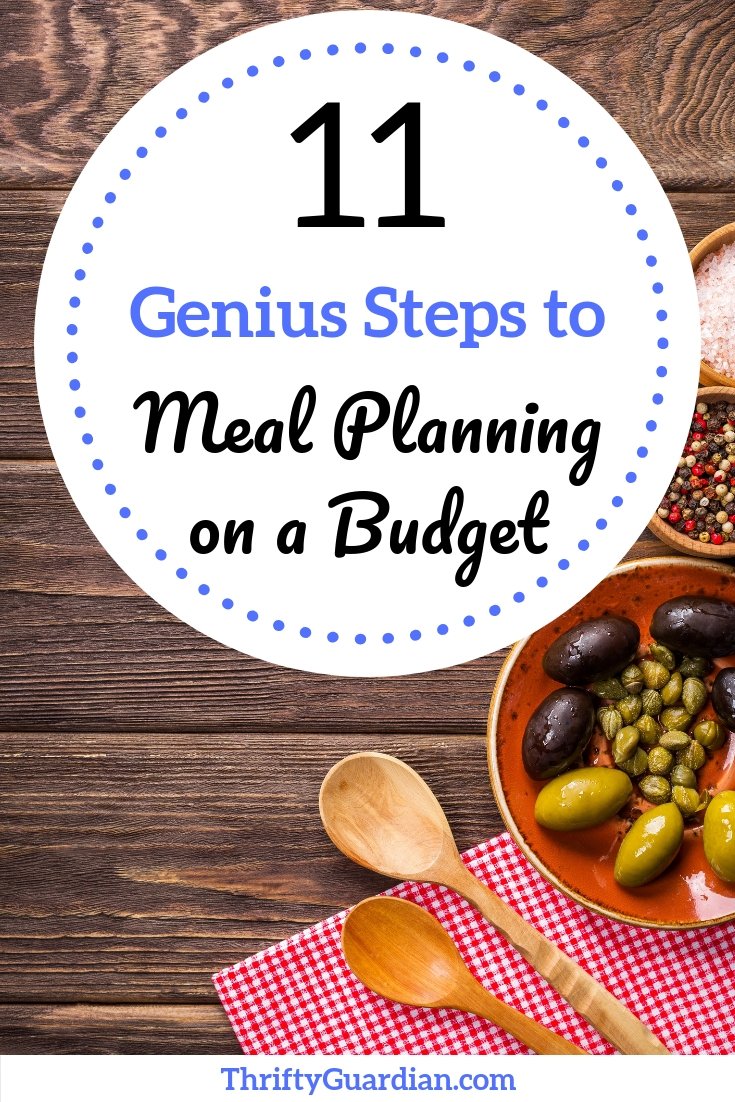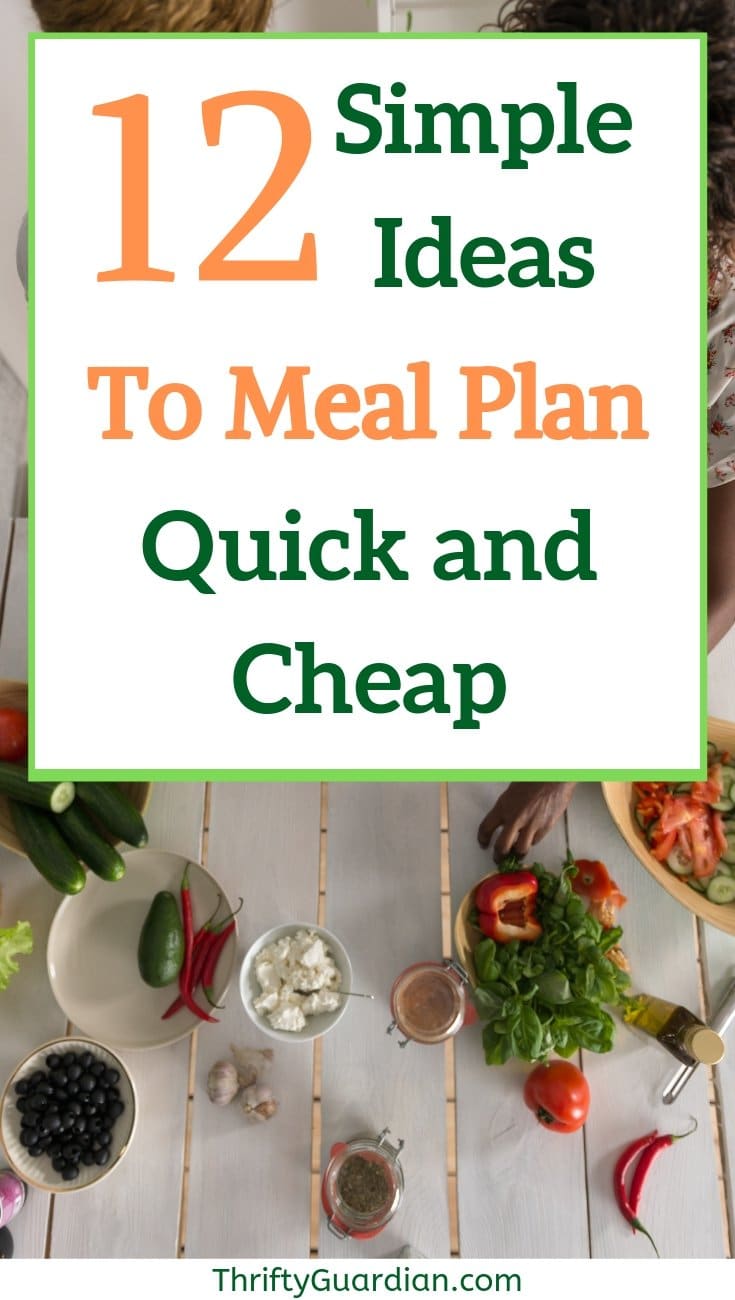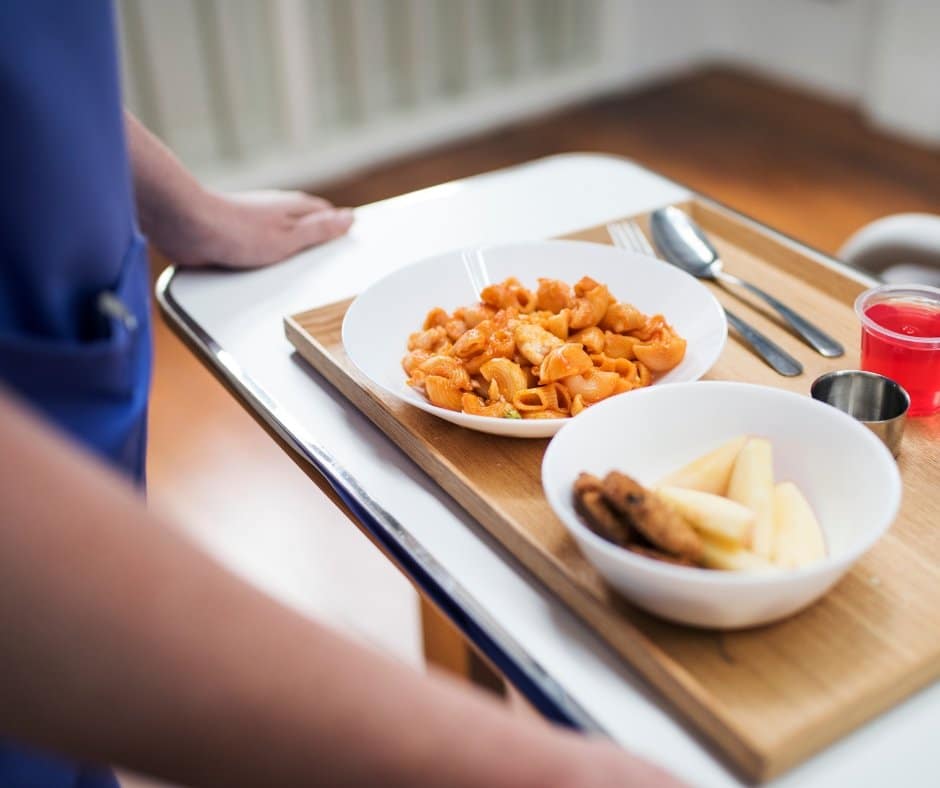Creating a healthy meal plan on a budget can be tricky. We so often have the best of intentions: we develop a meal plan(ish), buy our groceries, fist pump when we’re $16 under budget, and then suddenly your two year old is screaming, the baby has a rash, and making that Pinterest-worthy quiche for dinner is the last thing on your mind because McDonalds here we come!!
The guilt of feeding your toddler a Go-Gurt and cheeseburger for dinner doesn’t weigh as heavy as your eyelids from not having slept all week, so you brush it off and pray you get to bed before midnight tonight. You tell yourself you’ll do better next week. You’ll create a better meal plan that is healthy but that allows for some flexibility. This week was just a rough week. Next week will be better…hopefully…
But then next week comes and your budget is all out of whack because you went over your food allowance thanks to one too many “happy” meals and the produce you bought last week is now squirrel food and and AND….
Take a breath. I’ve been there.
Creating (and sticking to) a healthy meal plan can be tough when we’re constantly pulled in a thousand different directions and there’s only so many minutes in the evening to get things done. Fortunately I can help.
A few simple steps can be the key to keeping your family fed and healthy, and your wallet fat and happy.
(Please note this article contains affiliate links, which means I may receive a commission should you click through. This in no way impacts my recommendation of any products/services.)
How to Meal Plan on a Budget

Take Your Time Meal Planning
“Step 1: My TIME? Did you miss the memo about my lack of time??! Thanks, Amber…”
Stick with me, dear reader. If you’re creating a meal plan just before you go grocery shopping, you’re going to create a panicked, rushed menu that might be short-sighted or be missing key ingredients; suddenly it’s Wednesday, you’re supposed to have lasagna, and you don’t have marinara sauce or noodles.
One of the best ways to start your meal plan is to flip through your local grocery ads. This way you can craft your menu around the great deals being offered on produce or meat that week.
You should also take the time to consider what your kids will actually eat, what’s in season, and what day of the week your grocer creates sale prices. Often you can find meat or produce drastically marked down on a specific day of the week because it’s nearing the end of its shelf-life. This doesn’t mean it’s bad, but just that it’s nearing the time in which it can still be sold.
It’s especially important to keep an eye out for great deals on meat, because that can be frozen and used at a later date, and still picked up for half the cost of what it was just one day before.
Cook Once, Eat Twice
Cooking enough for your family is a given, but if you take five minutes to cook extra of the base ingredients, you can save yourself thirty minutes in the long run.
If you’re cooking a grain like rice or quinoa, or a big pot of pasta, it takes hardly any extra effort at all to toss some extra in and store it individually for a future meal. In fact, to get the most mileage out of the time spent cooking, you’re shortchanging yourself if you’re not getting at least dinner and a lunch out of your efforts.
In addition, cooking a large batch of a grain or pasta on a Sunday will leave you with a base from which to work later in the week for the meals on your plan. This cuts down significantly on the prep work for the weeknights, time far better spent relaxing with your family.

Put Your Leftovers to Work
Beyond simply increasing your portions for future meals, a good meal plan flows together as the week goes on.
Cooking a protein on Monday can mean that Tuesday’s dinner is already prepped. For instance, you can roast a chicken on Monday night then shred the leftovers, toss in some seasonings, and have chicken tacos on Tuesday!
This is a great way to make the most of the leftovers you have, even if reheating leftovers isn’t necessarily your thing.
A dinner meal plan that flows might look like this:
Monday –Crockpot Chicken and Veggies
Tuesday – Chicken Tacos
Wednesday – Bolognese and Quinoa
Thursday – Mostaccioli
Friday – Tilapia
Saturday – Thai Lemongrass Tilapia Curry Soup
Sunday – Sirloin steaks
Monday – Steak stirfry
You also want to take into consideration what produce you can cut up ahead of time for multiple meals. For example, we make a vegan bolognese that incorporates a lot of the same veggies that go into korma so I often try to make those meals close together.
Cut once, cook twice!
Shop Locally, Shop Seasonally
I went looking for eggplant the other day and when I finally found it at the local HyVee, it was exceptionally expensive. I swear I just bought one for like $1 the other da….oh, nope, that was three months ago. Heh. Oops.
When I last bought eggplant, it was from the Farmer’s Market when they were at their peak and everyone had dozens of them for sale. When fruits and vegetables are in season, there’s an abundance, and what’s more you can get them from local farmers that are concerned about how they manage their produce. Normally you can count on food that’s not doused in pesticide, or eggs that are free range and fed normal feed instead of industrialized garbage.
Learning to find out what produce is in season is a great way to train your body to enjoying a wealth of different foods, not to mention how much better they taste than the tiny, off-season offerings we have at the stores now. If you’ve shopped for zucchini in the last few months, you know what I’m talking about – they’re tiny! I’ll wait until summer when they’re the size of small dogs and bursting with flavor, not to mention cheaper.
Freezer Food
Being able to freeze leftovers, extra meat you purchased on sale, or in-season produce can make all the difference when it comes to eating healthy on a budget. Not having enough freezer space can be quite costly, so consider investing in a chest freezer.
If you have the time, canning is considerable work with a wonderful payout, but again, there’s that catch – if you have the time. If you don’t, freezing can be a viable substitute for in-season fruits and vegetables that are plentiful and cheap. Buying in bulk, divvying up into containers or baggies, and then freezing produce is a great way to stretch those dollars.
Similarly, you can buy a lot of meat in bulk from local farmers (we’re talking a quarter of a cow!) for a great price and then freeze it all, using as you need it.
If you’re patient, you can usually find someone on Craigslist or a Facebook resale page selling an old deep freeze for cheap. It doesn’t need bells and whistles; it just needs to get and stay cold.
Use Cash
As I often recommend for many of those who have a harder time sticking to a budget, use cash. Figure out how much you’re going to spend on groceries per week and get to the ATM.
This allows for two things:
1. You can see exactly where your money is going in a way that using a debit or credit card doesn’t allow for.
2. It discourages impulse spending.
Keep a tally as you shop so you know whether or not you can actually afford that sweet treat or a six-pack (no, sadly, I do not count that as an essential!)
Know Where to Cut Back
We used to have a pretty insane food budget per week – $200 for our family of three (at the time). And we’d go over it sometimes! That’s pretty much the definition of insane idiocy!
Knowing we had to cut back (and quick!) we started first by developing a meal plan and tracking where our biggest expenditures were coming from.
Once we had a good grasp on how much we were spending and where we were spending it, we began by cutting it down a bit each week, and as of the time of publishing, we’ve cut it in half.
$75 for (now four) of us is much more palatable. There are still days we go over a bit, because having two little ones is nothing if not busy. That’s ok, though! At least the days of going over $200/week are done and gone.
Here’s how we cut back:
– We started off only cutting $20/week and saw how we had to adjust and what we were comfortable with/without.
– We changed the stores where we bought most of our food. Schnucks became Aldi and believe me when I say we’ve never looked back.
– We buy most of our dry goods online and in bulk. 10lbs of quinoa for $25? Hello!
– We improved the quality of the food we eat, and by that I mean we cut out a great deal of the processed foods and replaced them with whole, natural produce, meat, eggs, and dairy that actually left us sated.
– We cut out impulse buys significantly by only using cash to make our purchases. Aldi is a two-fold boon here, because they only take cash or debit cards. It helps with this strategy.
Shop Online
As I mentioned above, we often buy a lot of our dry goods online, such as pasta, flour, and sugar. While your grocer probably has a lot of what you’re looking for, chances are it’s going to be more expensive than you need to pay.
An example of this would be quinoa – we use a lot in our household because it’s incredibly healthy, very versatile, and can be used in a huge variety of applications from savory to sweet, breakfast to dinner. Local stores, if they even have it, usually charge $5/lb+, but on Amazon, I recently bought a 10lb bulk bag for a little over $2.50/lb, and that includes shipping.
Of course you want to see your meat and veggies up close and it’s unlikely you could get those things online at a good price anyway, but buying bulk pantry items from Amazon.com is a fantastic way to stock up without burning a hole in your wallet. Plus they deliver straight to your door! Oh, how I love online shopping…(Don’t forget to use Rakuten and Ibotta to save even more!!)
Simplify
Trying to cook elaborate meals when you have an infant and a toddler is like trying to catch a bunch of flies when you’re surrounded by bullfrogs; it doesn’t make sense. Your kids likely don’t care what they’re eating, if they’re eating at all, and your spouse is too busy going from odd stain to odd stain, deciphering if they’re spills or spit-ups, to care if your dinner looked amazing on Pinterest.
If you need to make a meal of jarred alfredo and rigatoni, with some frozen broccoli tossed in, then do it. It would only cost about $4 and would easily feed a family of four!
Sometimes you simply want a big salad for dinner, and you know what, that’s great! Salad comes together in minutes, can be full of healthy proteins, fats, and veggies, and can be incredibly cost effective.
My point is that homemade dinners don’t need to be elaborate or expensive. Like ever. Don’t stress about it.
Get Familiar
Starting a new week with five new meal ideas, even if they’re simple, is a recipe (haha) for disaster. I’m not suggesting you never branch out to try new foods, but you should always have a good amount of solid, well-liked recipes in your repertoire so that you can pull an old standby out in a pinch. Remember how your older relatives always had actual physical recipe boxes? Use those!!
This also helps you easily gauge what you’ll need for leftovers or a flowing meal plan since you’re already exceptionally familiar with the ingredients and cooking involved.
Visualize Your Plan
Buy a magnetic white board, some wet erase markers, and stick it to your fridge where you’ll see it daily. From there, write down your meal plan so that everyone can see it, you are constantly aware of it, and there’s no surprises.
An added benefit to having it on a white board is being able to erase and adjust as needed. Just like having cash at hand when you go to buy groceries, awareness helps inform every decision you make, from purchase to plate.
This will go a long way to creating savings and efficiency in later meal plans.
Now go meal plan
This post isn’t exhaustive by any means, but it’s a great place to start if you want to cut your expenses and still eat healthy food.
If you focus on eating the majority of your meals at home, meals comprised of whole foods and minimal waste, you can improve your health and the health of your finances.
Remember, we’re not just trying to save money, we’re trying to save time so we can improve the quality of our lives.
Happy planning!






These are all terrific suggestions, Amber. I do a meal plan each week and try to do all my chopping and prep at one time with a cooking/prep day. I love leftovers! And putting a couple of servings in the freezer for a busy week is a plus. We still spend a lot on groceries, though – even for two people. Could be more because I buy all my dry goods, paper products, vitamins, etc in one store. I don’t want to run around to 2-3 different places to save a few pennies. Shopping online for some of these items is a good idea, but I still find one list and one shopping trip simplifies my life enough to make it worth it.
Fair point! It’s all about figuring out what works best for you and yours in terms of both time AND money! 🙂
Amber, I love this post. I do a great deal of meal planning and love your suggestions. My kiddos are bigger, but often, not in the mood for what I had planned. Easy is best. My favorite recipes usually come with the words quick and easy in their titles! 🙂
Haha yours and mine both, Robin! We’ve only recently started to push more of the “you get what you get and you don’t throw a fit” sort of mentality, where the kids either eat what we’re eating or they can have a PB&J. The only exception is when we eat spicey food, I’m not that mean. 😉
Great post and lots of great suggestions. I have had a chest freezer for years, and I have taken to freezing whole tomatoes when they are in season, as well as riced cauliflower (got some organic stuff on sale!) and I freeze chopped celery all the time to throw in soup or spaghetti sauce. Celery from farmers market is so tasty!
Lately we are just going with meat and veg for dinner, and I tend to buy giant bags of frozen veggies from Costco, or its grilled chicken and salad. I thought I would get sick of it, but nope. My daughter requested that we ditch the starch and I agree. Simple lol.
We’re working on “ditching the starch” ourselves this year! And we FINALLY bought a chest freezer so I’m all the more excited for the summer and farmer’s market. Can’t wait to stock up on healthy, delicious veggies!